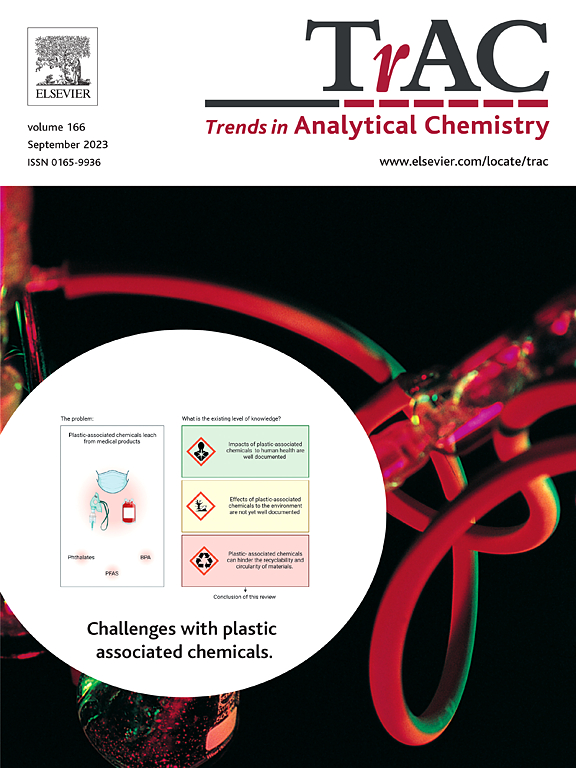单细胞分辨率高复用成像去噪:深度学习保障细胞空间异质性分析
IF 11.8
1区 化学
Q1 CHEMISTRY, ANALYTICAL
引用次数: 0
摘要
高维单细胞技术能够在单细胞分辨率下探索异质性细胞群,揭示对各种疾病的深刻生物学见解。单细胞分辨率高复用成像是高维单细胞分析的前沿技术之一,在创建高维细胞生物标志物目录的同时保留空间背景。可视化预处理是高复用成像数据处理的重要组成部分,其目的是通过使用去噪算法来去除原始信号中的噪声。随着高复用成像的应用越来越广泛,去噪优化对于推进未来的研究至关重要。在本文中,我们总结了不同的高复用成像技术的特点,并回顾了去噪算法的原理、特点、发展和应用。此外,我们还讨论了技术需求和发展前景,为领域研究和技术开发提供了帮助。本文章由计算机程序翻译,如有差异,请以英文原文为准。
Denoising for single-cell resolution highly multiplexed imaging: Deep learning safeguards cell spatial heterogeneity analysis
High-dimensional single-cell techniques enable exploring the heterogeneous cell populations at single-cell resolution unveiling deep biological insight into various diseases. Single-cell resolution highly multiplexed imaging is one of the cutting-edge techniques for high-dimensional single-cell analysis, preserving spatial context while creating high-dimensional biomarker catalogs of cells. As a part and parcel of highly multiplexed imaging data processing, visualization preprocessing aims to remove noise from original signal, a process achieved through the use of denoising algorithms. While highly multiplexed imaging become more widely adopted, denoising optimizations are critical for advancing future research. In this paper, we summarize the feature of different highly multiplexed imaging techniques and reviews the principles, characteristics, development, and applications of denoising algorithms. Furthermore, we discussed the technical requirements and development prospects, offering assistance for domain researches and technology developers.
求助全文
通过发布文献求助,成功后即可免费获取论文全文。
去求助
来源期刊

Trends in Analytical Chemistry
化学-分析化学
CiteScore
20.00
自引率
4.60%
发文量
257
审稿时长
3.4 months
期刊介绍:
TrAC publishes succinct and critical overviews of recent advancements in analytical chemistry, designed to assist analytical chemists and other users of analytical techniques. These reviews offer excellent, up-to-date, and timely coverage of various topics within analytical chemistry. Encompassing areas such as analytical instrumentation, biomedical analysis, biomolecular analysis, biosensors, chemical analysis, chemometrics, clinical chemistry, drug discovery, environmental analysis and monitoring, food analysis, forensic science, laboratory automation, materials science, metabolomics, pesticide-residue analysis, pharmaceutical analysis, proteomics, surface science, and water analysis and monitoring, these critical reviews provide comprehensive insights for practitioners in the field.
 求助内容:
求助内容: 应助结果提醒方式:
应助结果提醒方式:


